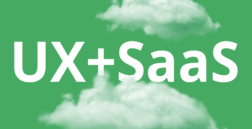UX + SaaS: Delighting users and reducing risk

Whether you’re a cloud-native company or just beginning a digital transformation journey, Software as a Service (SaaS) products prove their worth daily. Successful SaaS solutions help companies become nimble and scalable, adaptable in shifting markets, and able to meet increasing customer demands. But how to maximize your chances of SaaS success? One of the key success metrics of SaaS products is adoption – if no one is using it, it’s not going to succeed. One of the most effective ways to bolster adoption is user experience (UX). A thoughtful and deliberate UX strategy that follows long-established human-centered design principles can help your team deliver product experiences that empower users, exceed business goals and reduce the uncertainties and risks associated with digital product development.
An important component of a solid UX strategy is a human-centered design approach that features user-needs discovery research, rapid prototyping, and user testing. These will illuminate vital insights about how current and prospective users interact with your SaaS product – and more importantly, you’ll develop a keen understanding of the ways that users want to use it. Systematically engaging your core constituents in an unbiased and cost-efficient manner will surface not just the “what” but the “why” of product use and lay a data-based foundation for decision making and innovation. Armed with business and user data, your team can build digital products and experiences that achieve true differentiation in the crowded SaaS market, support business directives, and enable your teams to pivot swiftly with certainty in response to user feedback, market shifts, and evolving business priorities.
A proper UX strategy for SaaS is more than just human-centered design, of course. SaaS products sit within a complex ecosystem of sales, support, and development teams, all of which influence your product’s user experiences. Competitors come and go, you may be swamped with feature requests from power users, stakeholders in the field may be at odds regarding next steps, and leaders in the executive suite are often divorced from a boots-on-the-ground view of their products in use. As your product team navigates these waters, here are a few points on UX strategy to help you build the right thing, and build the thing right.
Bring the right product to market – fast
The SaaS market for both consumer and enterprise apps can turn on a dime, and your team needs to be able to keep up and deliver products that will succeed in a shifting market. While the Agile development model allows your engineering team to pivot gracefully, user testing and iterative design activities validate the features that you build – ensuring that they’ll meet a positive reception with new and prospective users.
Design for your organization’s ecosystem
No SaaS product exists in a vacuum. As users interact with your app, they’ll touch many different parts of your organization that are only tangentially related to your carefully crafted product experience – billing, support, marketing, and more. A holistic and human-centered approach to product research and design can help you understand the full journey a user takes as they interact with your organization. A carefully defined, data-driven, and thorough user journey map illuminates both the areas of delight and the pain points that your team can use to tune your product’s experience more closely to your user’s needs and business goals.
Seamless onboarding and signup
Selecting and trying new digital products has never been easier for users with the introduction of SaaS. With such a range of available options in any given vertical, your product can stand out from the rest and increase user engagement through a carefully designed signup and onboarding experience. Best-in-class onboarding experiences welcome users into a product with a detailed understanding of their capabilities, illustrating how they help a user meet their own goals. In cases like this, rapidly developing clickable prototypes and testing them with users can help your team to polish the signup and onboarding experience until it shines.
Give your users a superpower
SaaS products with great user experiences should empower your constituents: if users feel like they can do more, faster, and achieve something that they couldn’t do before, you’ve given them a new superpower (to paraphrase Kathy Sierra’s book Badass). Creating interfaces that anticipate user needs leads to a product that feels effortless to use, empowering users to focus on their work rather than navigating your product. A round of usability testing and heuristic analysis leads to the insights that let your team develop product features and streamlined user interfaces to supercharge your users. And as it has been established, few things have as great an impact on SaaS success than adoption, and few things foster adoption better than providing good user experiences.
Be Multidisciplinary
Successful SaaS teams see SaaS not just as a technical challenge but as a design opportunity. Multidisciplinary teams made up of a product lead, a user experience lead, a development lead, a marketing lead, and a visual design lead, supported by their respective teams are more likely to draw actionable conclusions and mix them into the planning, design, and development processes faster and with greater confluence than teams who get team-specific feedback only through Sprint demos or waterfall process handoffs. A “measure twice, cut once” approach that based on user needs data is highly likely to move faster, achieve more, and have less revising to do throughout the product development lifecycle.